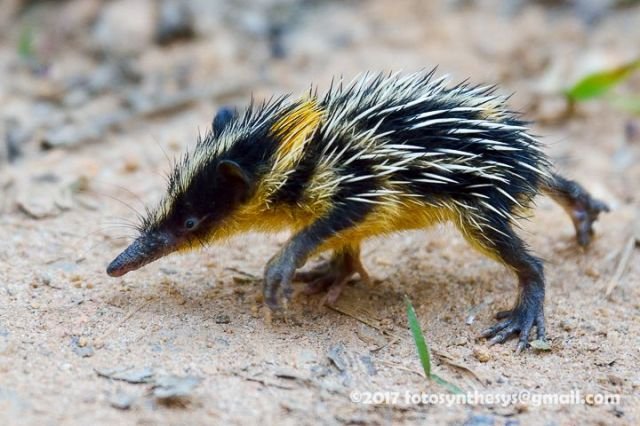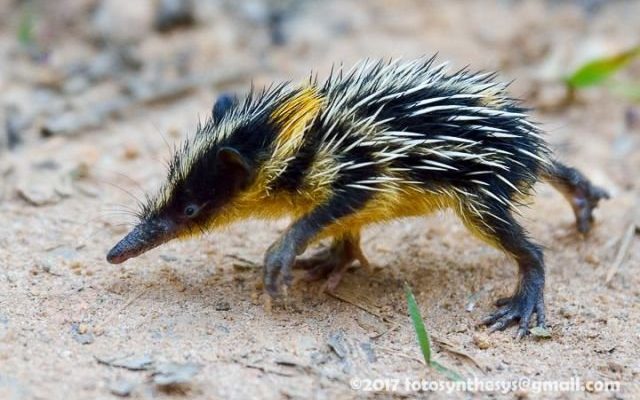
Imagine you’re at a café with a friend, sipping on some coffee and sharing fun facts about wildlife. You might say, “Did you know there’s a creature that resembles a hedgehog but isn’t one? That’s a tenrec!” Despite their oddball appearance, tenrecs are diverse and come with their quirks. So, let’s dive into some common myths and clear up the confusion surrounding these unique little mammals.
Myth 1: Tenrecs Are Just Hedgehogs in Disguise
One of the most persistent myths is that tenrecs are just another type of hedgehog. Honestly, if you look at them, it’s easy to see why some people think this! They have spiny coats and a similar body shape, but here’s the thing: tenrecs belong to a completely different family called Tenrecidae, while hedgehogs are part of the Erinaceidae family.
To put it simply, tenrecs and hedgehogs are like distant cousins at a family reunion. Both are small, spiny, and adorable, but they have distinct characteristics. For instance, tenrecs can vary greatly in size—from tiny ones that fit in the palm of your hand to larger species that are almost the size of a cat!
What’s more, they have different behaviors and habitats. Hedgehogs are mostly solitary, and they’re primarily found in Europe and Asia. In contrast, tenrecs thrive in a variety of environments in Madagascar, from tropical forests to dry areas, and they can be quite social.
Myth 2: All Tenrecs Are Nocturnal
Another common misconception is that all tenrecs are active only at night. While it’s true many species, like the common tenrec, prefer to be active during the night hours, not all of them follow this pattern. Some species are actually diurnal, meaning they’re more active during the day!
This variation often depends on their habitat and the presence of predators. For example, in areas where the risks of predation during the day are lower, certain tenrec species may venture out in the sunlight. So, if you’re hoping to catch a glimpse of these charming creatures in action, your chances might vary based on which type you’re looking for!
Myth 3: Tenrecs Are Only Found in Madagascar
While it’s true that Madagascar is the most famous home for tenrecs, they aren’t exclusive to the island. You might be surprised to learn that tenrecs also inhabit parts of mainland Africa, particularly in tropical areas. It’s like thinking of a famous celebrity and assuming they’re only seen in one city; they often surprise you with their travels!
Tenrec populations can be found in countries like Mozambique and Tanzania. This adds a layer of complexity to their distribution, as different species have adapted to different environments. For example, the lesser hedgehog tenrec can be spotted in the rainforests of Madagascar, while others prefer the drier savannahs of the mainland.
Myth 4: Tenrecs Are Dangerous Creatures
You might be wondering if tenrecs have a fierce reputation because of their spines. It’s easy to assume that any creature with spikes might be dangerous, but let me explain. Tenrecs are generally not aggressive and pose little threat to humans. They’re more likely to run away than confront you!
In fact, they have a fascinating defense mechanism: when frightened, some species roll into a ball, much like a hedgehog. They might look prickly, but they’re actually quite gentle. There are a few species that can bite if they feel threatened, but they typically prefer to avoid conflict.
So, if you encounter a tenrec in the wild, don’t panic! Just give them space, and they’ll likely scurry away to safety.
Myth 5: Tenrecs Are All Herbivores
Another myth you might hear is that all tenrecs nibble on plants. While some species do have a herbivorous diet, many tenrecs are omnivorous. Their eating habits can be quite varied, depending on what’s available in their environment.
For example, they enjoy a mix of insects, fruits, and even small vertebrates. You could think of them as the “snackers” of the animal world, sampling a bit of everything! Their ability to adapt to different food sources is one reason they thrive in various habitats.
This diet not only helps them stay healthy but also keeps the ecosystems they inhabit in balance. By feasting on insects, tenrecs play a part in controlling pest populations, proving that even small creatures can have big impacts.
Myth 6: Tenrecs Make Great Pets
Now, you might be tempted to think about adopting a tenrec after hearing all these fun facts. However, here’s the scoop: tenrecs are not the easiest pets to care for. They have specific habitat needs and require a well-maintained environment to thrive.
Tenrecs can be quite active, and they often need plenty of space to roam and explore. Additionally, they’re not as cuddly as some other small mammals, such as hamsters or guinea pigs. Many tenrec species prefer their own space and might not enjoy human interaction as much as you’d hope.
If you’re considering a pet, it’s essential to do thorough research and understand the commitment involved. While tenrecs are absolutely fascinating, they might be better appreciated in the wild or in a sanctuary rather than in a household setting.
Myth 7: All Tenrecs Have the Same Appearance
Lastly, it’s easy to assume all tenrecs look similar because they share some common traits. But, quite the opposite is true! Tenrecs come in diverse shapes, sizes, and colors. They can be small and sleek or larger and more robust, with coats that range from spiky to soft.
For instance, take the golden tenrec, which boasts a beautiful golden hue and a softer coat compared to its spiny relatives. On the flip side, the common tenrec sports a more hedgehog-like appearance with its spines.
This diversity in appearance is a result of evolution and adaptation to their specific environments. Just like how some people have different hairstyles or fashion choices, tenrecs showcase their uniqueness through their looks.
Wrapping Up the Tenrec Talk
Tenrecs might be small, but they’re filled with surprises! Many myths and misconceptions surround these fascinating creatures. From their diverse diets to their unique habitats and behaviors, tenrecs offer a glimpse into how nature creates a beautiful variety of life.
Next time you hear someone mention tenrecs, you can share these insights and help bust those myths. Whether they’re seen as cute little critters or misunderstood animals, there’s no denying that tenrecs are a treasured part of our planet’s biodiversity. So, keep exploring, keep learning, and continue to share the wonders of wildlife!

